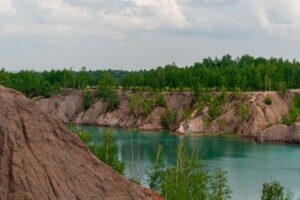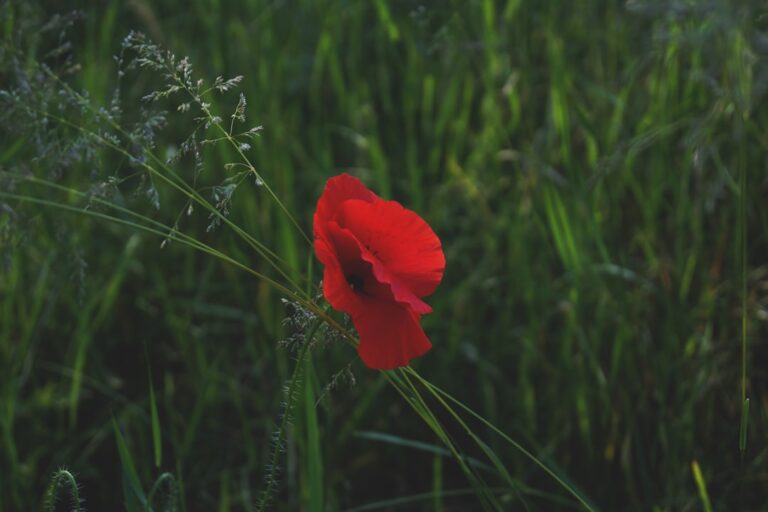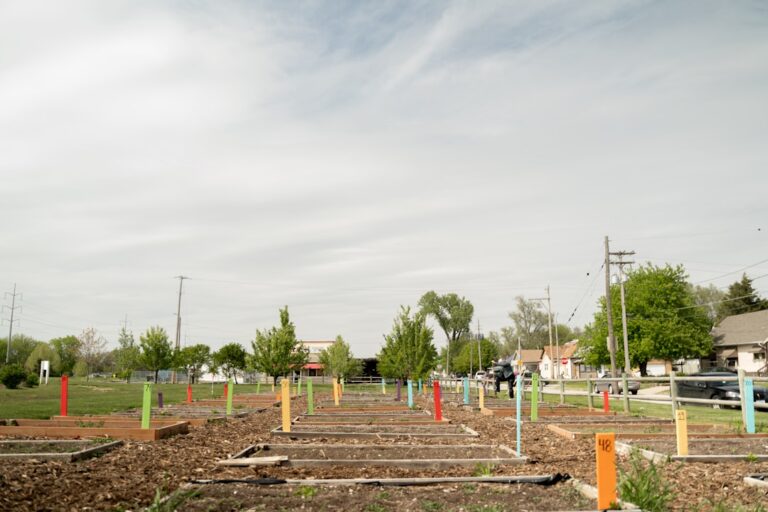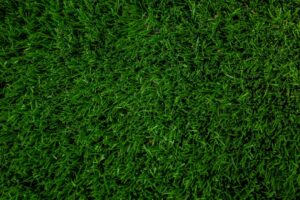Grass is a fundamental component of many ecosystems, providing not only aesthetic value to landscapes but also serving critical functions such as erosion control, habitat for wildlife, and carbon sequestration. However, grass can exhibit weakness due to a variety of factors, leading to patchy lawns, reduced growth, and increased susceptibility to pests and diseases. Understanding the underlying causes of grass weakness is essential for homeowners, landscapers, and agricultural professionals alike.
This article delves into the multifaceted reasons behind grass health issues, exploring environmental influences, pest pressures, nutritional needs, and maintenance practices that can bolster grass resilience. The phenomenon of grass weakness can manifest in several ways, including discoloration, stunted growth, and increased vulnerability to environmental stressors. These symptoms can be particularly disheartening for those who invest time and resources into maintaining lush green lawns or productive turf areas.
By identifying the specific factors contributing to grass weakness, individuals can take proactive measures to restore vigor and promote healthy growth. This exploration will cover a range of topics, from the impact of environmental conditions to the importance of selecting appropriate grass varieties and implementing effective pest control strategies.
Key Takeaways
- Grass weakness can be caused by environmental factors, pests and diseases, and nutritional deficiencies.
- Environmental factors such as temperature, moisture, and soil quality can greatly impact the health of grass.
- Common pests and diseases that target grass include insects, fungi, and viruses, which can weaken and damage the grass.
- Nutritional deficiencies in grass, such as lack of nitrogen, phosphorus, or potassium, can lead to poor growth and health.
- Proper maintenance, selecting resilient grass varieties, and implementing effective pest and disease control measures are key strategies for overcoming grass weakness and maintaining healthy grass.
Environmental Factors Affecting Grass Health
Environmental factors play a crucial role in determining the health and vitality of grass.Soil Quality: The Foundation of Healthy Grass
One of the most significant influences is soil quality, which encompasses aspects such as pH levels, nutrient availability, and soil structure. For instance, compacted soil can restrict root growth and limit access to essential nutrients and water. Conversely, overly sandy soils may drain too quickly, leaving grass roots parched and unable to absorb moisture effectively. Regular soil testing can provide valuable insights into these characteristics, allowing for targeted amendments that enhance soil health and support robust grass growth.
Weather Conditions: A Key Factor in Grass Health
Weather conditions also significantly impact grass health. Extreme temperatures—whether excessively hot or cold—can stress grass plants, leading to dormancy or even death in severe cases. For example, during prolonged droughts, grasses may turn brown and become dormant as a survival mechanism. Similarly, heavy rainfall can lead to waterlogged soils that suffocate roots and create an environment conducive to fungal diseases.
Understanding Local Climate Patterns
Understanding local climate patterns and seasonal variations is crucial for anticipating potential stressors and implementing appropriate management strategies.
Common Pests and Diseases that Target Grass

Grass is susceptible to a variety of pests and diseases that can compromise its health. Among the most common pests are grubs, which are the larval stage of beetles such as Japanese beetles and June bugs. These pests feed on grassroots, leading to thinning turf and increased vulnerability to drought stress.
Identifying grub infestations early is critical; signs include patches of grass that easily pull up from the soil or areas that appear brown and lifeless. In addition to pests, various diseases can wreak havoc on grass health. Fungal infections such as brown patch and dollar spot are prevalent in warm, humid conditions.
Brown patch manifests as circular brown patches on the lawn, often accompanied by a dark border, while dollar spot appears as small, bleached patches resembling coins scattered across the turf. Effective disease management requires a combination of cultural practices—such as proper watering techniques and mowing heights—and targeted fungicide applications when necessary.
Nutritional Deficiencies and Their Impact on Grass
| Nutritional Deficiency | Impact on Grass |
|---|---|
| Nitrogen deficiency | Stunted growth, yellowing of leaves |
| Phosphorus deficiency | Reduced root growth, purplish discoloration of leaves |
| Potassium deficiency | Weak stems, increased susceptibility to diseases |
| Iron deficiency | Yellowing between leaf veins |
Nutritional deficiencies are another critical factor contributing to grass weakness. Grass requires a balanced supply of macronutrients—nitrogen (N), phosphorus (P), and potassium (K)—as well as micronutrients like iron, manganese, and magnesium for optimal growth. A deficiency in nitrogen often results in yellowing leaves (chlorosis) and stunted growth, while insufficient phosphorus can lead to poor root development and reduced flowering in certain grass species.
Soil testing is an invaluable tool for diagnosing nutritional deficiencies. By analyzing soil samples for nutrient content and pH levels, homeowners can tailor their fertilization strategies to meet the specific needs of their grass. For instance, if a soil test reveals low nitrogen levels, applying a nitrogen-rich fertilizer can help restore vigor.
Additionally, understanding the timing of nutrient applications is crucial; for example, applying fertilizers during the active growing season maximizes uptake by grass roots.
Overcoming Grass Weakness through Proper Maintenance
Proper maintenance practices are essential for overcoming grass weakness and promoting healthy growth.
Regular mowing not only keeps grass at an optimal height for photosynthesis but also encourages lateral growth, resulting in denser turf.
It is important to avoid cutting more than one-third of the grass height at any given time to prevent stress on the plants.
Deep watering sessions that penetrate the root zone are preferable to frequent shallow watering, as they encourage deeper root growth and improve drought resistance.
Ideally, lawns should receive about one inch of water per week, either through rainfall or irrigation. Monitoring weather conditions can help determine when additional watering is necessary, ensuring that grass remains hydrated without becoming waterlogged.
Selecting Resilient Grass Varieties

Understanding Environmental Stressors
When it comes to maintaining a healthy lawn or turf area, selecting the right grass variety is crucial. Different species exhibit varying levels of tolerance to environmental stressors such as drought, heat, shade, and foot traffic. For example, Kentucky bluegrass is renowned for its lush appearance, but it may struggle in hot climates without adequate irrigation.
Choosing the Right Variety for Your Climate and Needs
In contrast, zoysia grass is known for its heat tolerance and ability to thrive in less-than-ideal soil conditions. When selecting grass varieties, it is essential to consider local climate conditions and intended use. For instance, if a lawn will experience heavy foot traffic from children or pets, choosing a durable variety like tall fescue or Bermuda grass may be advantageous due to their resilience under stress.
The Benefits of Native Grasses
Additionally, native grasses often require less maintenance and are better adapted to local environmental conditions, making them an excellent choice for sustainable landscaping. By selecting a resilient grass variety that is well-suited to your local climate and needs, you can enjoy a healthy and thriving lawn or turf area with minimal maintenance.
Implementing Effective Pest and Disease Control Measures
Implementing effective pest and disease control measures is vital for maintaining healthy grass. Integrated Pest Management (IPM) is an approach that combines cultural practices, biological controls, and chemical treatments to manage pest populations sustainably. For example, encouraging beneficial insects such as ladybugs can help control aphid populations naturally.
Cultural practices play a significant role in disease prevention as well. Practices such as proper lawn aeration improve air circulation around grass plants, reducing humidity levels that favor fungal growth. Additionally, maintaining proper mowing heights can minimize stress on grass plants and reduce susceptibility to diseases like powdery mildew.
When chemical interventions are necessary, it is crucial to select products that target specific pests or diseases while minimizing harm to beneficial organisms. Timing applications correctly—such as treating for grubs in early summer when they are actively feeding—can enhance effectiveness while reducing the need for repeated treatments.
Strategies for Maintaining Healthy Grass
Maintaining healthy grass requires a multifaceted approach that addresses environmental factors, pest pressures, nutritional needs, and proper maintenance practices. By understanding the complexities of grass health and implementing targeted strategies—such as selecting resilient varieties and employing effective pest control measures—individuals can cultivate lush lawns that thrive under various conditions. Regular monitoring and proactive management will ensure that grass remains vibrant and resilient against the challenges posed by nature and human activity alike.
Grass weakness can be a fascinating topic to explore, especially when considering the interconnectedness of nature and the environment. In a related article on the value of knowledge (source), one can delve deeper into the intricate relationships between different elements of the natural world, such as how grass weakness may impact ecosystems and biodiversity. Understanding the rich natural beauty of places like Botany Bay (source) can also shed light on the importance of preserving and protecting our environment. Additionally, exploring topics in sociology and other social sciences (source) can provide valuable insights into how human behavior and societal structures may influence the health and resilience of grass and other plant species.
FAQs
What are some common weaknesses of grass?
Grass can be susceptible to diseases such as brown patch, dollar spot, and rust. It can also be affected by environmental stressors such as drought, excessive heat, and poor soil conditions.
How can I improve the health and resilience of my grass?
To improve the health and resilience of your grass, you can ensure proper watering, fertilization, and mowing practices. Additionally, aerating the soil and overseeding can help promote a healthy and dense lawn.
What are some signs that my grass may be experiencing weakness?
Signs of grass weakness can include discoloration, thinning, and the presence of patches or spots. Additionally, grass may exhibit slow growth, wilting, or increased susceptibility to pests and diseases.
What are some strategies for preventing weakness in grass?
Preventative measures for grass weakness include regular maintenance practices such as proper watering, fertilization, and mowing. Additionally, addressing any underlying soil issues and promoting good air circulation can help prevent weakness in grass.
When is the best time to address weakness in grass?
It is best to address weakness in grass as soon as signs become apparent. Early intervention can help prevent further damage and promote the recovery of the grass.
























+ There are no comments
Add yours